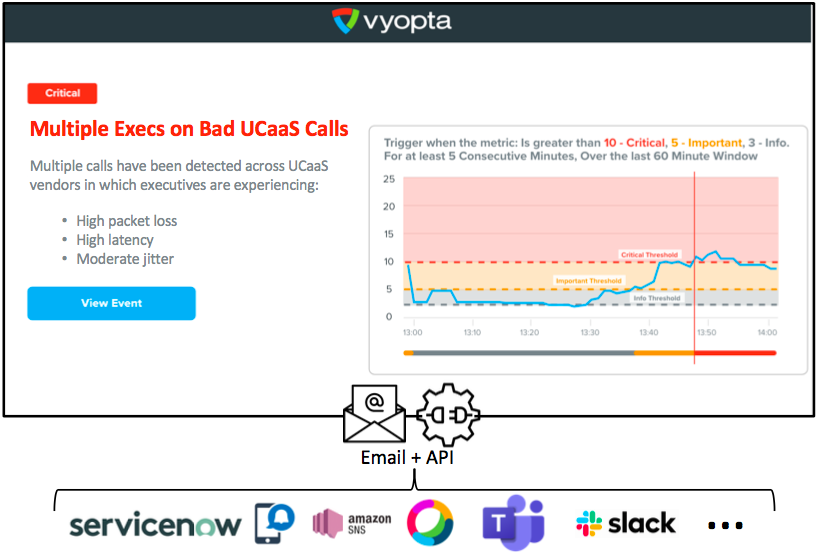It is time to embrace the age of the hybrid workplace. More than a year since the onset of the Covid-19 pandemic – and with widespread vaccinations not likely until late 2021 – large companies and organizations will need to construct a staggered model for how their knowledge workers perform their duties; partly via remote work and partly in a dramatically changed office environment.
During her presentation at this year’s Enterprise Connect, Kamalina Czerniak, Vyopta’s head of Product Marketing, said many of the pieces are in place for companies that shifted to remote work at the start of the pandemic.
Unified communications as a service (UCaaS) providers have become increasingly important players over the past 12 months, with 80 percent of companies in a recent Vyopta survey saying they are relying on UCaaS services to scale their virtual meetings, and 64 percent saying they are using more than one UCaaS or collaboration service.
That move toward the cloud was already expected in large organizations, Czerniak said, but the sudden move of workers into their home offices in early 2020 made it happen all at once.
“Many companies had plans in 2020 and 2021 to eventually migrate over time, department by department and user by user from legacy on-premises technologies for video conferencing and voice calling to cloud-based technologies. What the pandemic did is it made that switch happen immediately. There was no time for that transition. We saw companies relying on these cloud-based technologies, increasing the license count and putting more strain on the UCaaS technology providers themselves to deliver.”
Collaboration is key for the hybrid workplace
The growth in UCaaS and the popularity of Microsoft Teams as well as emergent services over the course of spring and summer 2020 made it clear that the future of work was here. That meant executives, managers and UC and IT teams had to start thinking about what UC and collaboration tools were working best.
The learning curve was steep, both for workers using new tools away from the office and for the teams charged with ensuring quality of experience amid a massive increase in call and video conference volume.
Czerniak said there was a realization that the vendor-provided reporting and troubleshooting capabilities native to individual UCaaS services themselves weren’t designed to give the best picture of what’s happening in a multivendor UC environment, let alone allow an organization to scale their IT teams to support the increased usage and support the experience needed to sustain business productivity.
Originally it was about scaling license count to enable remote workers, then “the conversation became, can the technology actually sustain good Quality of Experience (QoE) among virtual team members for those teams to continue working productively as well as they worked together when they were face to face?” she said.
“There’s two things that relate to that. One is the actual performance of the technology … and secondly, are people using the right features and engaging with the platforms that have been adopted by the company.”
With the budget of IT teams mostly frozen throughout the pandemic, answering those questions quickly and with the most relevant data became more important than ever. Czerniak said customers reported sometimes spending two weeks’ worth of work time tracking down the cause of bad call quality prior to using Vyopta’s single-pane-of-glass insights.
Detailed data and analytics allowed UC teams to find the exact cause of a bad experience for a company executive, whether it was a poor home Internet connection, a glitch with a peripheral headset, or faulty service with a UCaaS platform.
“If there is a quality issue happening at a certain geographic location or if it’s happening for users who are using certain combinations of technology, that team member needs to know what’s happening to be able to troubleshoot and resolve issues,” she said. “If it’s something that is happening on the side of the UCaaS provider, organizations still need to be able to show them that and tell them, you can go in and take care of that and fix it because it’s on your end, not on ours and it is impacting how our employees and our end users are able to collaborate and work.”
See the full Enterprise Connect video on the hybrid workplace.
Chad Swiatecki is a business writer and journalist whose work has appeared in Rolling Stone, Billboard, New York Daily News, Austin Business Journal, Austin American-Statesman and many other print and online publications. He lives in Austin, Texas and is a graduate of Michigan State University. Find him online on LinkedIn.








